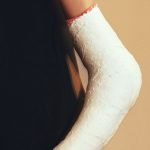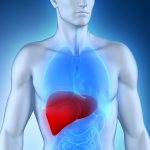
You don’t have to give up tropical drinks and chocolatey desserts for Valentine’s Day and other celebrations. Just streamline them and boost their health profile. Sweet and fiber-rich pears can be whipped into great cocktails. Most pears at the grocery store or even at the farmer’s market are picked early, since they can get easily damaged once ripe. To ripen at home, let pears rest in a basket on the countertop for two to three days. Pear Bellini 1 ripe pear 1 ounce pear-flavored liqueur 12 ounces champagne or prosecco Gently peel and core the pear. Cut into slices, reserving two for the garnish. Place the rest in a blender with the liqueur and two tablespoons of cold water. Process until smooth. Divide between two champagne glasses and top off with champagne or prosecco. Garnish with a slice of pear. Serve immediately. Yield: 2 servings Lighter Lava Cake This restaurant favorite uses chocolate with a high cacao content for its antioxidants as well as cocoa powder to cut the calories. Cooking spray 1/2 cup plus 1 tablespoon unsweetened cocoa 3 ounces of 70 percent dark chocolate, chopped 2 tablespoons butter 2/3 cup whole-wheat pastry flour 1 teaspoon baking powder 1/4 teaspoon salt 1/2 cup packed brown sugar 1/2 teaspoon vanilla extract 3 large eggs 2 tablespoons safflower, coconut or light olive oil Preheat oven to… read on >

















